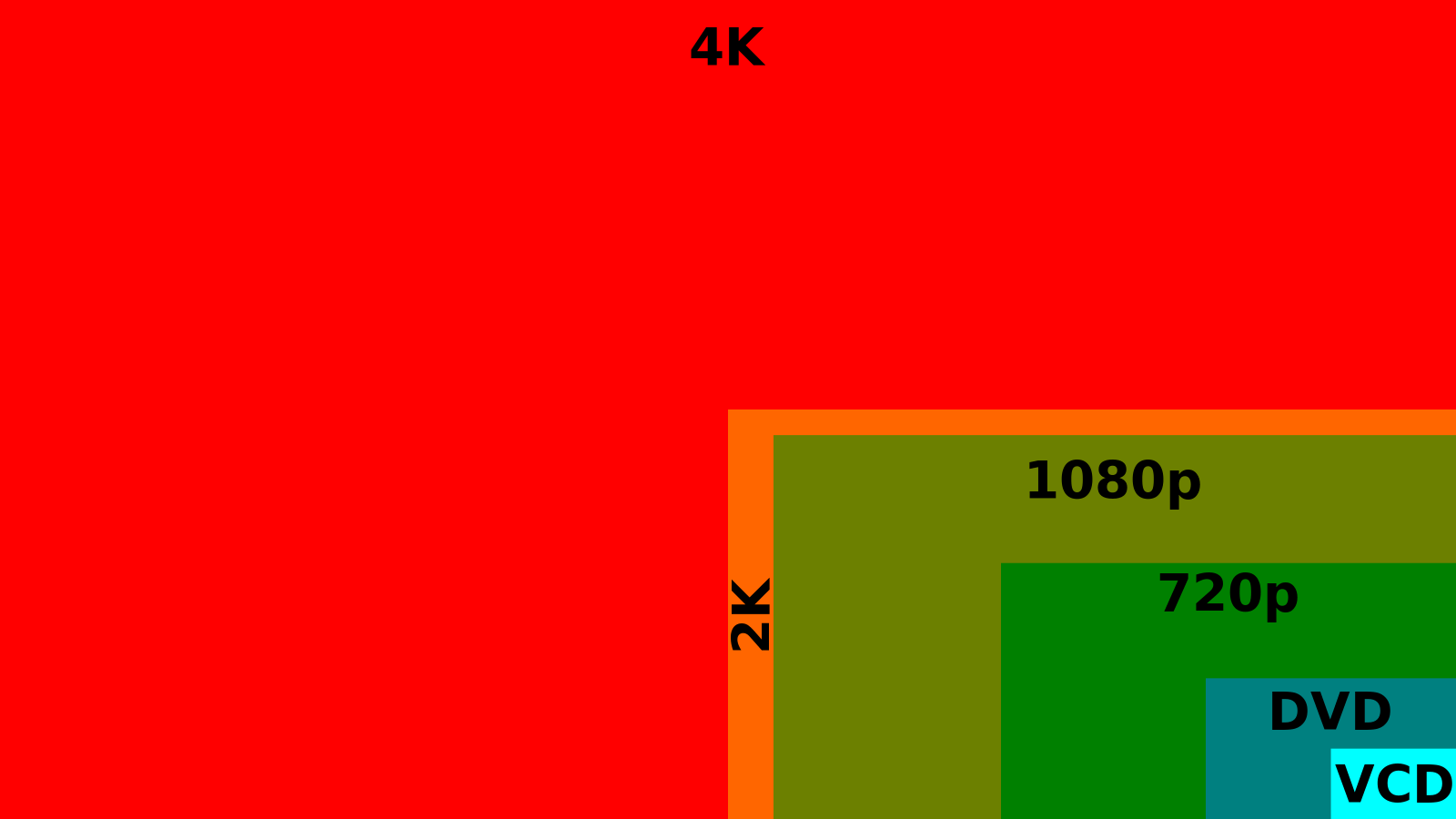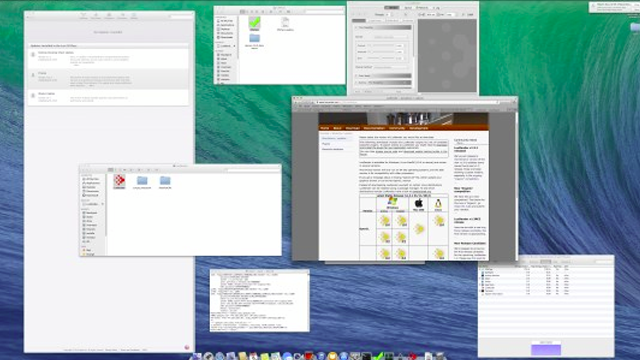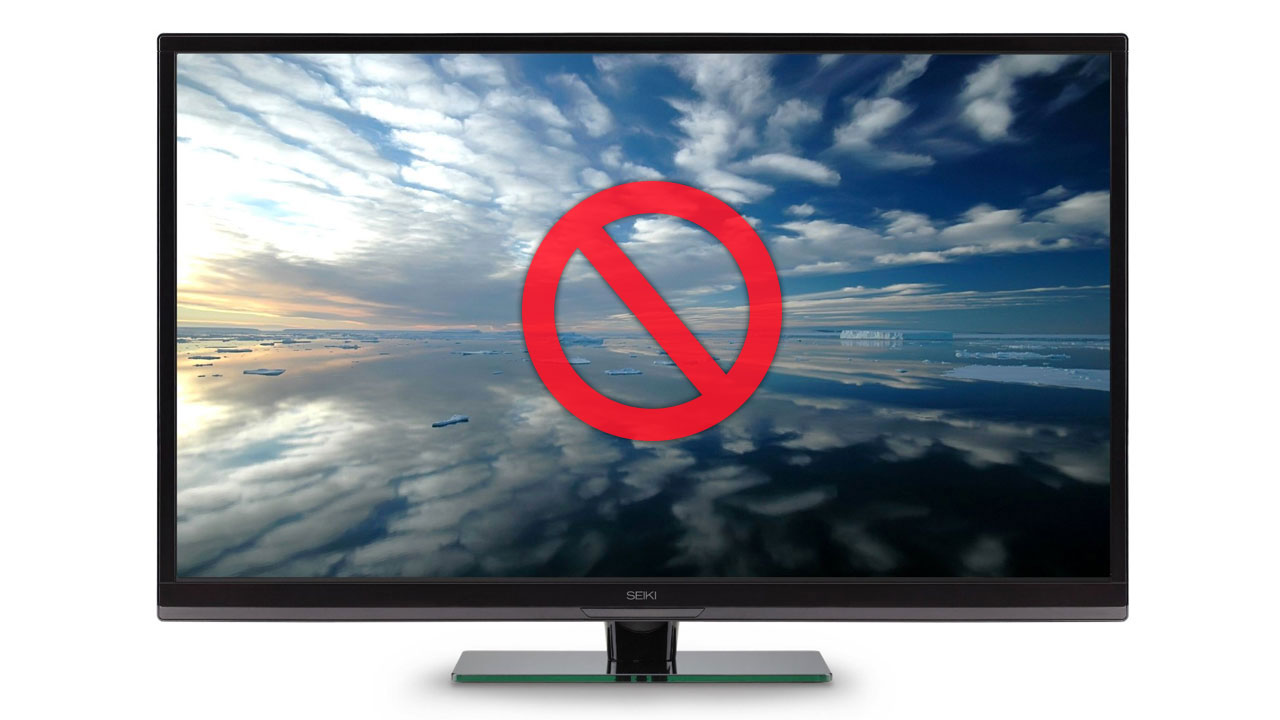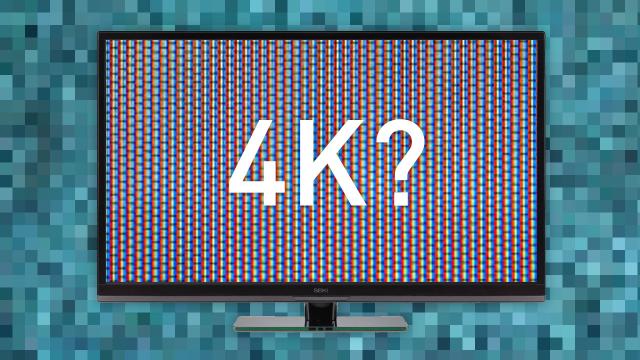Dear Lifehacker, 4K TVs hit the market last year and lots of companies are in the process of releasing budget-conscious 4K monitors. I like the idea of higher resolution, so is this something I can benefit from, or should I just stick with the monitor I have? Sincerely, Flustered Over 4K
Dear Flustered,
In short, no, you probably won’t benefit from buying a 4K monitor right now. The cheaper ones aren’t that great, the TVs have very little content you can watch on them, and the monitors worth purchasing cost so much that you really need a good reason to spend upwards of $US3000 on them. But later this year things may change a bit, so let’s first discuss what 4K can do for you and when it will be worth your money.
WTF Is 4K?

In the evolution of resolution, 4K is the next step up from 1080p. Standard definition started with a resolution of 640×480 (480i/p), then we went up to HD for the first time with 1280×720 (720p) and finally topped out at 1920×1080 (1080i/p) for a while. When we’re talking about these resolutions, we look at the number of vertical pixels in a display. In the case of 1080p, that’s 1080 pixels in each vertical line. 4K has a somewhat different and sort of opposite approach, as it counts the horizontal lines instead.
The native resolution of a 4K display with a standard 16:9 aspect ratio is 3840×2160. With 3840 pixels per horizontal line, you might be wondering where the “4” in 4K comes from. Well, manufacturers decided to round up because 3840 is pretty close to 4000 and, if you do the maths, it’s double the amount of 1920 — you know, from 1920×1080 or 1080p fame. It’s fair to round up for a few reasons. First, the resolution of a 4K display is four times greater — that’s a lot. Second, we consider 1080p displays to have 2K resolution, and technically 1920 isn’t quote 2000 either. Third, not all 4K displays round up. Pretty much every other 4K display with a different aspect ratio exceeds 4000 horizontal pixels.
How Can 4K Benefit Me?

You get that these displays pack a lot of pixels in, but what’s the benefit? On a TV, 4K offers an incredibly sharp picture. Nowadays, most movie theatres project digitally in 4K. If it works well on a giant movie screen, imagine how sharp it will look in your home. Well, you’ll have to imagine because it’s pretty much imperceptibly sharp. Most of us can’t tell the difference between 720p and 1080p from 2.4m away, so more resolution won’t make a big difference in your home theatre unless you’re projecting it on a gigantic screen yourself.
That all changes when you shove your face a foot away from the screen, much like you do with your smartphones and tablets. Nowadays, it’s hard to find a new tablet that doesn’t have an ultra high resolution screen because it looks so good. That’s why Apple introduced retina displays and everyone else followed along. They’re easier to read and they make great images look a heck of a lot better. 4K monitors can provide a similar experience on your desktop computer, and that’s pretty appealing.
Why You Shouldn’t Purchase a 4K Monitor Yet

We’ve already discussed why it’s pretty much pointless to buy a 4K television for your home theatre, but if 4K can be the “retina display” for your computer then why shouldn’t you get one? The ones worth buying cost about $1 per horizontal pixel. The more affordable options (such as the DELL P2815Q and UP2414Q) use low-cost panels that really don’t look that good. You’ll get higher resolution, but at the cost of good colour representation and great viewing angles. You’ll pay less for a lower-resolution monitor with a great panel, and that’s just a better buy at the moment.
Some exceptions apply, of course. You can pick up a 4K television to use as a monitor instead of one designed for a computer. You’ll end up with a high-resolution display for less than the actual monitors, but it will still suffer from the downsides of cheaper panels.
Furthermore, even if you want to spend the money on a great 4K display, you need a computer with a graphics card that can power it. Many Windows desktops are up to the task, but few Macs support 4K resolution (you need Thunderbolt 2) and Apple has poor support for 4K displays at the moment. (Supposedly OS X 10.9.3 will fix that.) If you can get past all these hurdles, you have to remember that you’re getting the most out of a 4K display when you’re in high DPI mode which diminishes the effective resolution. Basically, to get those super sharp details you won’t get a 3840×2160 workspace, but rather an extra sharp 1920×1080 one.
By now you should get the point: 4K displays aren’t cheap enough or useful enough to recommend to the masses. Cool, yes, but you’ll go through more early adopter pains (either with your eyes or your wallet) than with most products. That will change in the future, but for now we recommend you wait. At the very least, prices will go down by the time the 2014 Christmas season arrives.
Cheers
Lifehacker
Chart: TRauMa (Wikimedia Commons).

Comments
3 responses to “Ask LH: What Is 4K, And Should I Buy A 4K Display Right Now?”
So why didn’t they go with 2160p?!?! the general population seem to have there head around ‘Full HD’ 1080p, surely they could have made ultra HD 2160p and actually made it easier for customers to understand this is the next level …
I’m looking forward to 4k killing the multi monitor setup, and being able to have one 40-50″ monitor on my desk.
Keep in mind too that you’ll need a GPU that has enough grunt for all that 4K can offer…!
Whatever the case though, sooner or later there will be a move to higher resolutions, as there have been for the last ten years to 1080p.
No mention of the 30Hz refresh-rate limitation?
The reason you probably don’t want to run a 4k TV As a monitor has less to do with the quality of the Panel and more to do with the fact that the best connection they have is HDMI 1.4 (with few exceptions), and as a result your never going to be pushing more than 30Hz screen refresh to that screen.
Your going to need to wait until HDMI 2 is used on all tv’s and get the appropriate cable, or hold out for a DisplayPort 1.2 (or greater) connection
There is some pretty good discussions around whether 120Hz is really any better than 60Hz, but I don’t think your going to find anyone that will tell you that 30Hz is enough
Nailed it. But just try asking the guys at 120hz.org (yes a website just for 120hz supporters) if they think 60 is adequate.
the best 4k will be a 24inc to 32 inc monitor if you are a gamer as with the PPI will be very high you will not need AA or very low AA if you get the 32inc cos of the PPI so less overhead for the video card
Are you sure about the comment that UP2414Q is using the panel that don’t look that good? Its ultra sharp line up, and the only bad point is its limited physical screen size, I think. Please clarify if UP2414Q is that bad. Thanks.